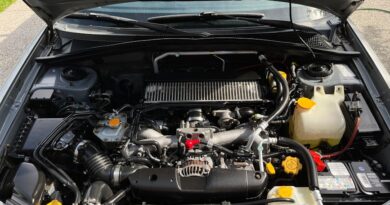Essential Steps for Engine Troubleshooting
Have you ever turned the key in your car and heard nothing? it’s a frustrating moment, and you’re not alone. Engine problems can leave you baffled and anxious. But fear not! This guide will walk you through essential steps for engine troubleshooting. By the end, youll feel more confident tackling common engine issues. Ready? Let’s get started!
What Are Common Engine Problems?

Engines are complex, but some issues pop up more often than others. Here are a few common problems:
- Strange Noises: If your engine sounds like it’s grumbling or whining, it could indicate a problem.
- Overheating: Is your temperature gauge creeping up? This could mean trouble.
- Stalling: If your car suddenly stops running, it’s a sign something is wrong.
- Check Engine Light: This light is your car’s way of asking for help.
Knowing these common issues helps you diagnose problems quickly. But how do you troubleshoot these problems effectively?
How Can You Start Troubleshooting Your Engine?

Start with the basics. Heres a step-by-step approach to troubleshooting your engine.
1. Check the Basics First
Before diving deep, rule out simple problems. Heres what to look for:
- Fuel Level: Is your tank empty? Sometimes the answer is that simple!
- Battery Connections: Make sure your battery terminals are clean and tight.
- Fuses: Check the fuses related to the ignition and fuel systems.
If everything looks good here, you can move on to more complex issues.
2. Listen for Sounds
Put your ear to the engine. Does it sound normal? Unusual noises can give you clues about what’s wrong. For example:
- Knocking: This could signal a problem with engine timing.
- Grinding: This might indicate issues with the starter or alternator.
Pay attention to these sounds. They often tell you more than you realize.
3. Check for Leaks
Leaking fluids can lead to serious problems. Here’s what to do:
- Look under your car for puddles.
- Check the ground for oil, coolant, or other fluids.
- Identify the color of the fluid; this can help pinpoint the issue.
If you spot a leak, it’s crucial to address it immediately. Ignoring it could lead to costly repairs.
What Should You Do Next?

Now that youve checked the basics, it’s time to dig a bit deeper. Here are some tried-and-true methods.
4. Use an OBD-II Scanner
Most cars made after 1996 have an onboard diagnostics system (OBD-II). This tool can show error codes that indicate specific issues. Here’s how to use it:
- Plug the scanner into your vehicles OBD-II port, usually located under the dashboard.
- Turn on the ignition without starting the engine.
- Read the codes displayed on the scanner.
Once you have the codes, you can look them up online for specific guidance. This will help you understand the problem better.
5. Inspect Spark Plugs
Spark plugs ignite the fuel in your engine. Worn or dirty plugs can cause misfires or poor acceleration. To check them:
- Locate the spark plugs, usually found on the engine’s cylinder head.
- Remove them and inspect for wear or carbon buildup.
- Replace any that look damaged.
New spark plugs can make a huge difference in engine performance.
When Should You Seek Professional Help?

Sometimes, despite your best efforts, problems persist. Here are signs it’s time to call in a pro:
- Complex Issues: If you find yourself confused or overwhelmed, don’t hesitate to ask for help.
- Tools You don’t Have: Some repairs require specialized tools or equipment.
- Safety Concerns: If you’re unsure about the repairs, it’s always best to consult a mechanic.
Remember, there’s no shame in asking for help. Safety should always come first.
What Are Some Common Misconceptions?
Before you wrap up, lets clear up some common myths about engine troubleshooting.
- Myth: I need to be a mechanic to troubleshoot. Truth: Many issues can be diagnosed with simple checks.
- Myth: Check engine lights always mean major problems. Truth: Sometimes, it’s just a loose gas cap.
- Myth: Engine repairs are always expensive. Truth: Some issues are easy and inexpensive to fix.
Understanding these misconceptions can save you time, money, and stress.
How Can You Prevent Engine Problems?
Prevention is key! Here are some tips to keep your engine running smoothly:
- Regularly check and change your oil.
- Keep an eye on fluid levels and top them off as needed.
- Monitor your tire pressure and ensure they are properly inflated.
- Follow your car’s maintenance schedule, including filter changes.
Taking these steps can help you avoid many common engine issues down the line.
Conclusion: Take Action!
Engine troubleshooting doesnt have to be intimidating. By following these essential steps, you can tackle many common problems with confidence. Remember to start with the basics, listen to your engine, and don’t hesitate to seek help when needed.
Next time you hear a strange noise or see the check engine light, youll know just what to do. Take care of your engine, and it will take care of you!
For more information on vehicle maintenance, check out our related post on common car maintenance tips.
If you’re looking for detailed information on OBD-II scanners, visit Consumer Reports.



